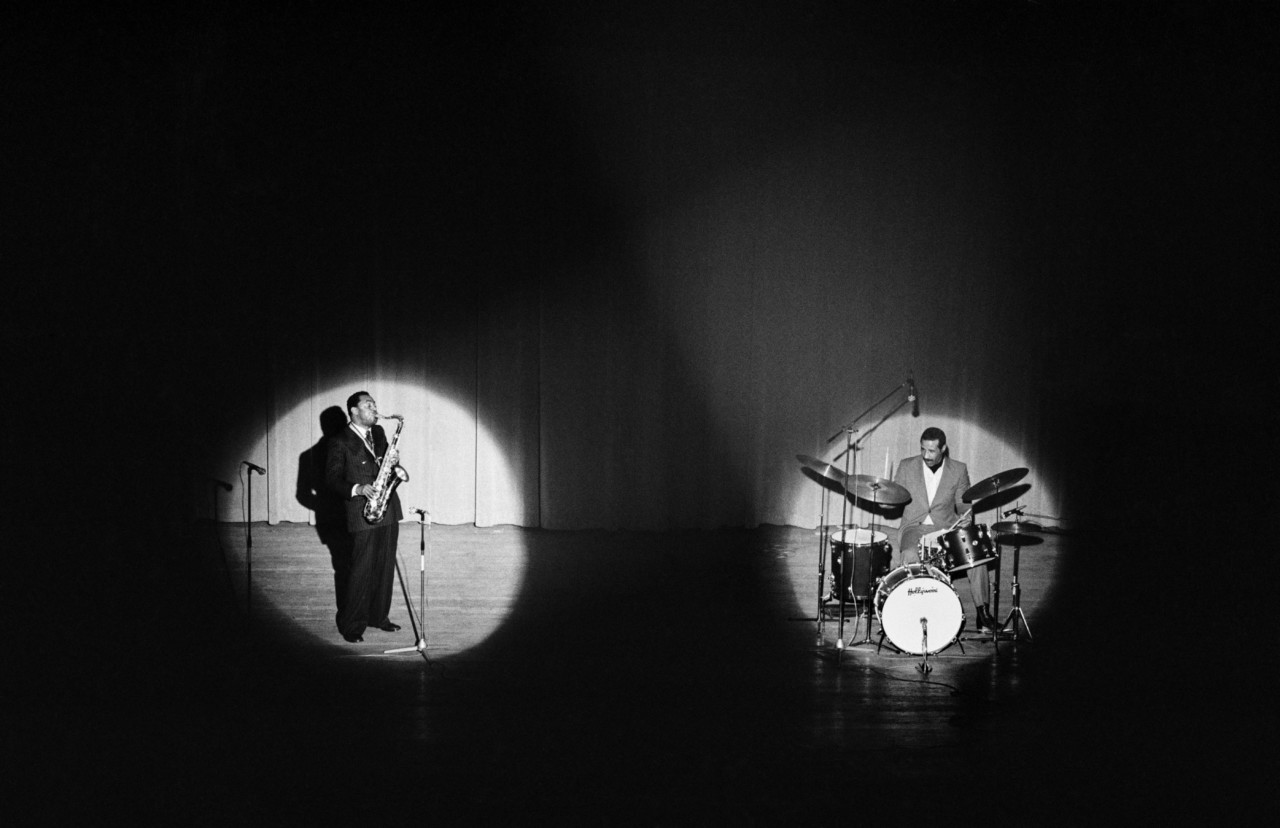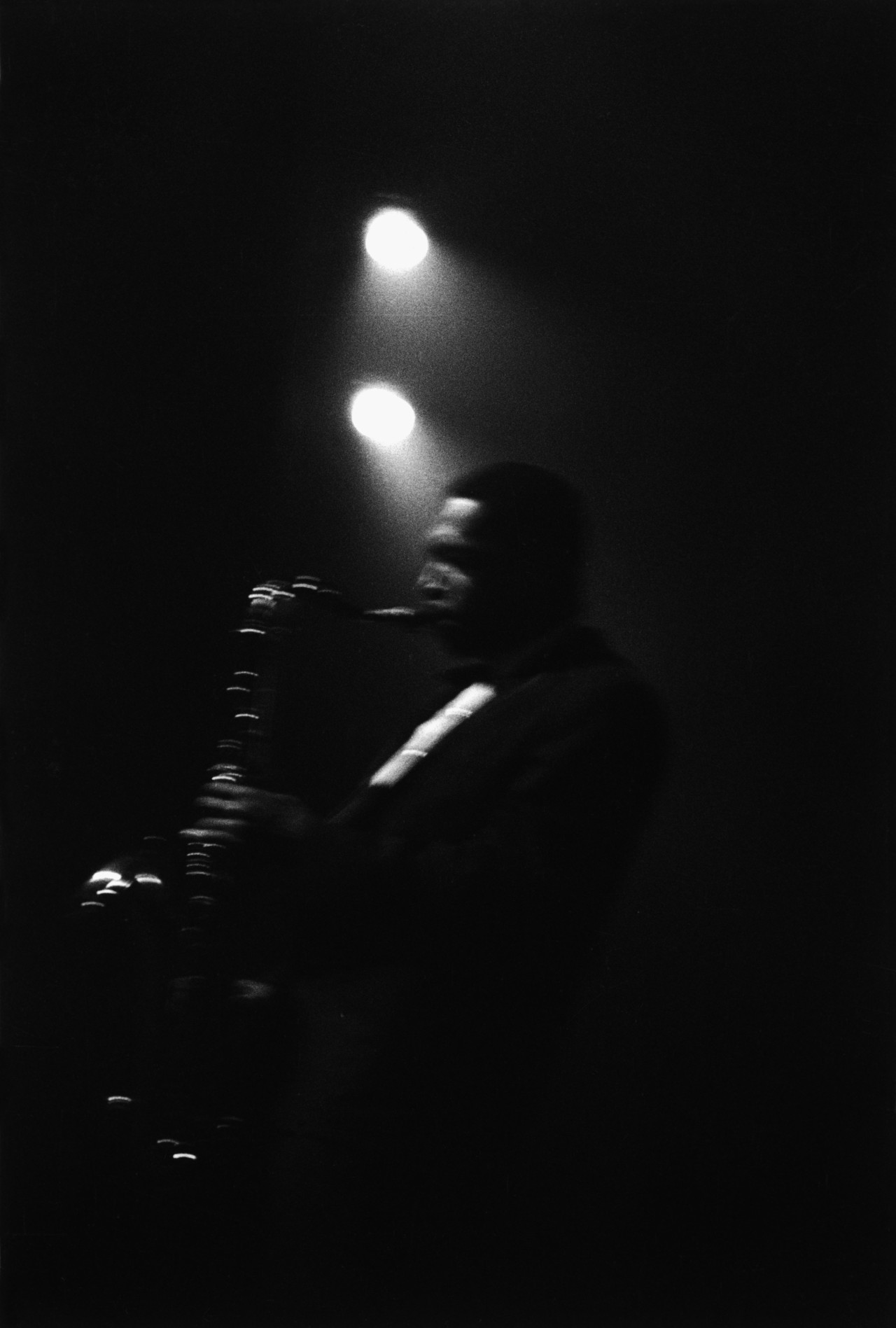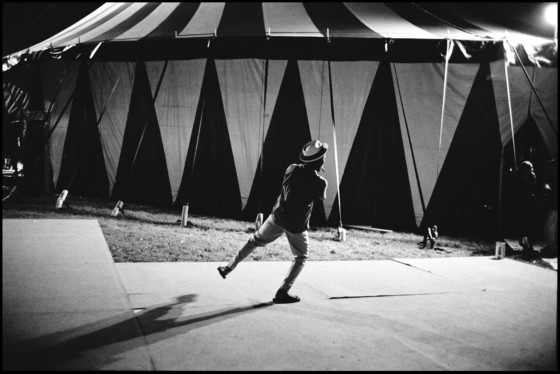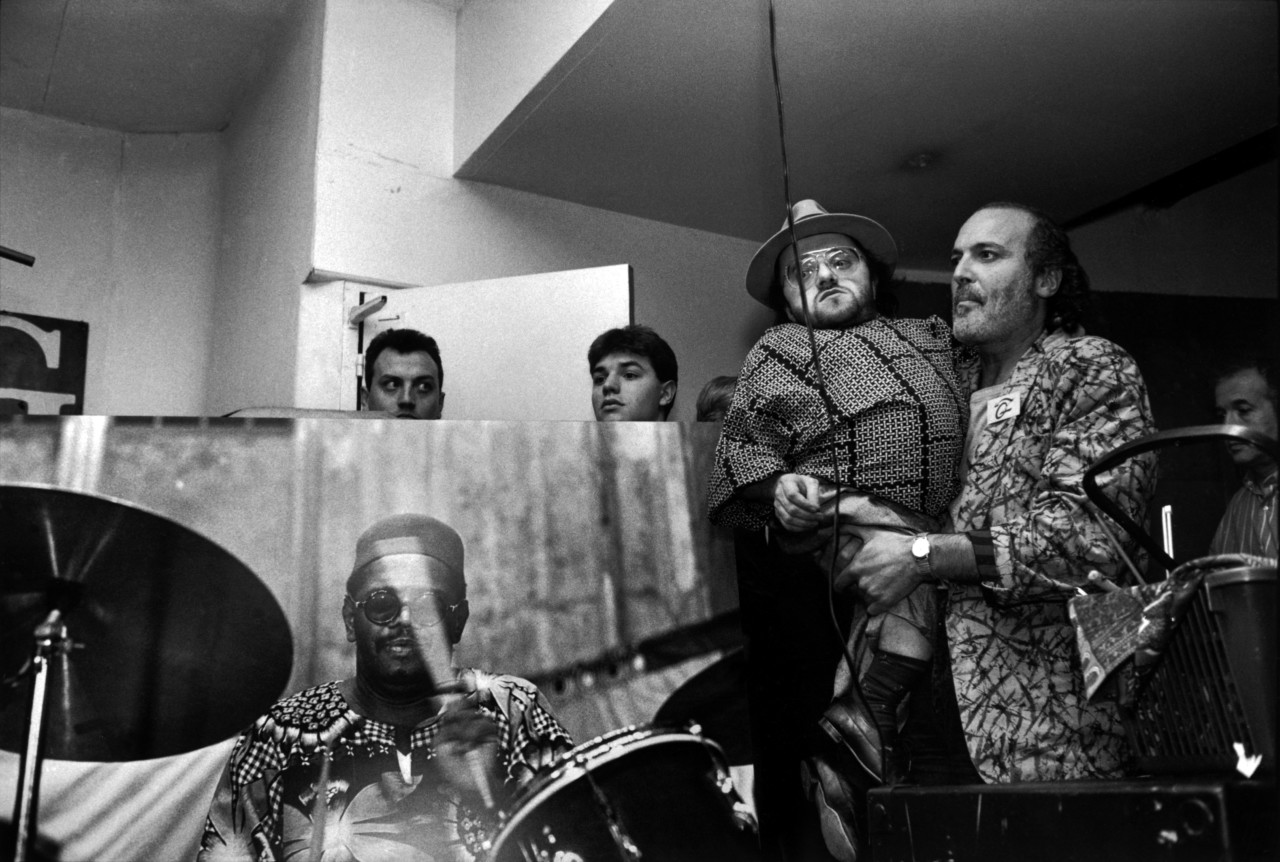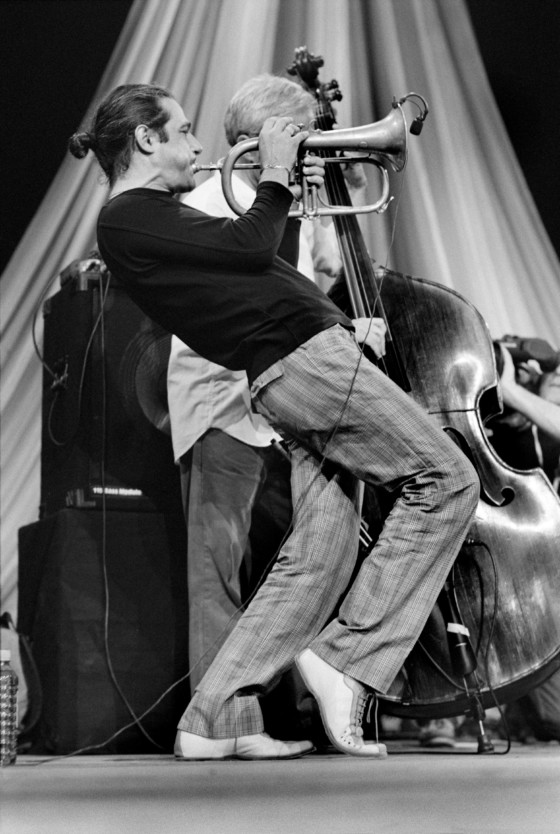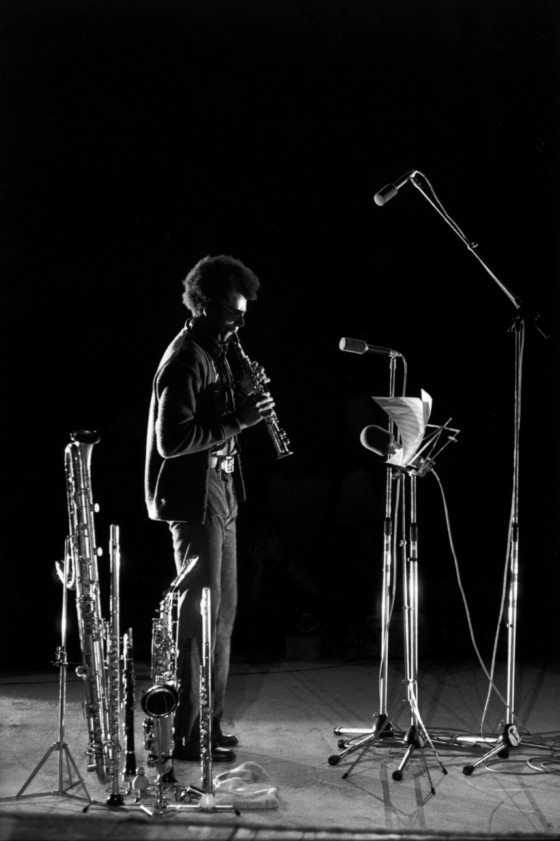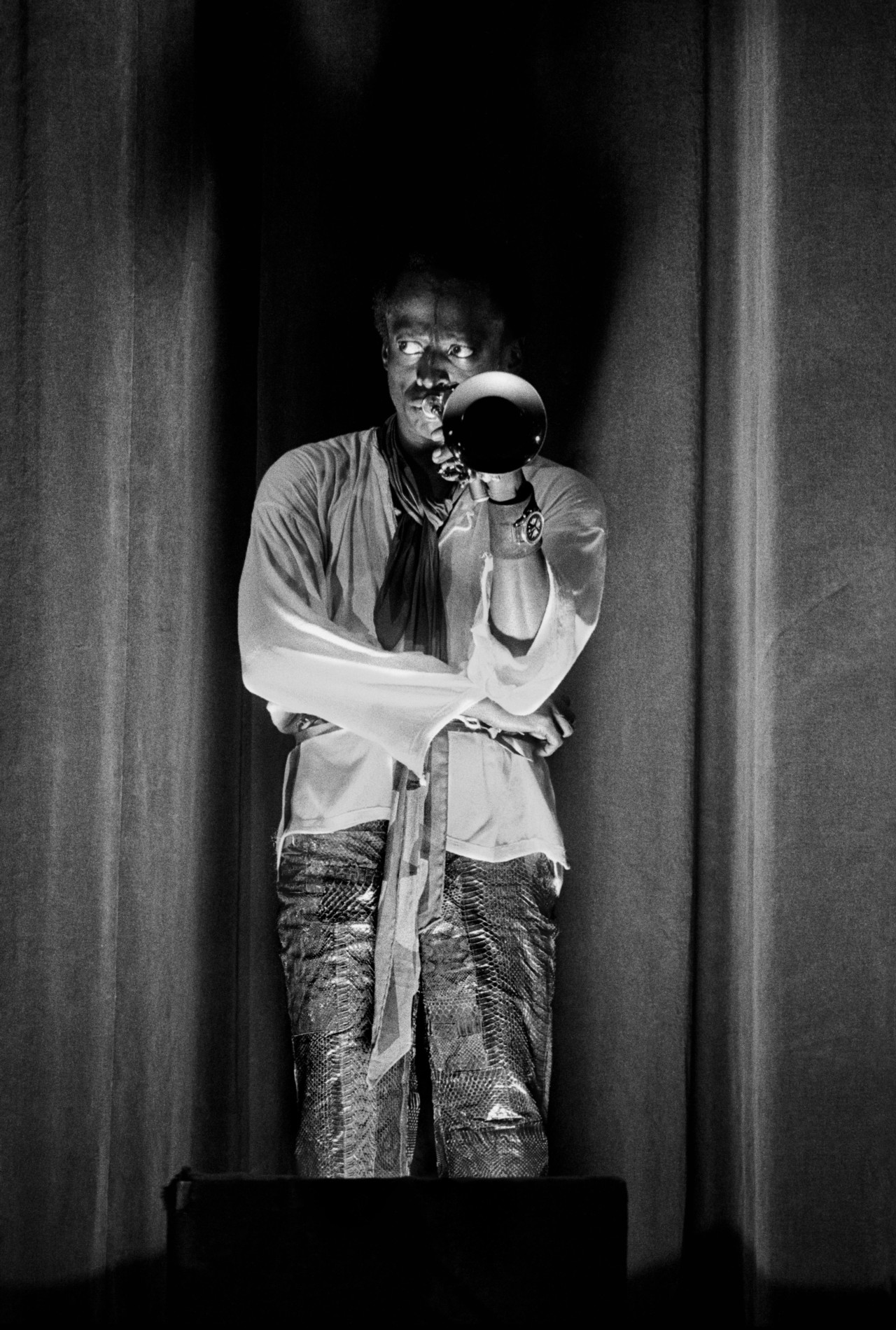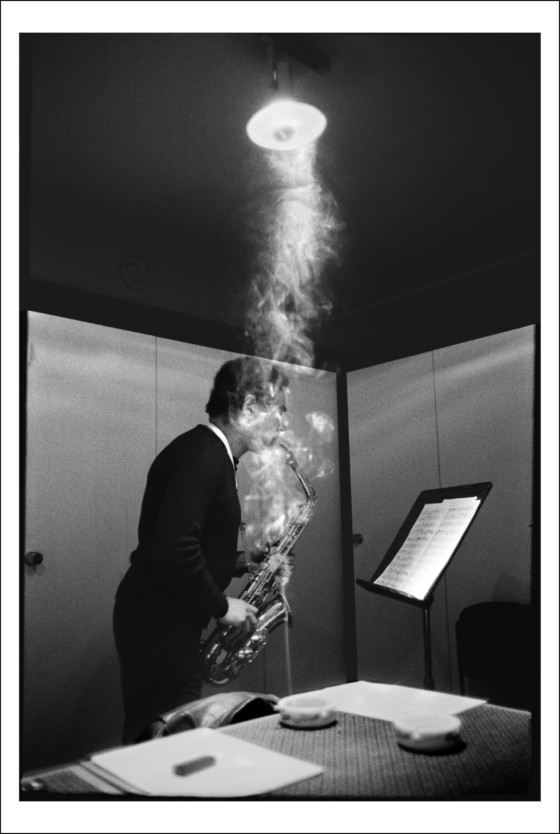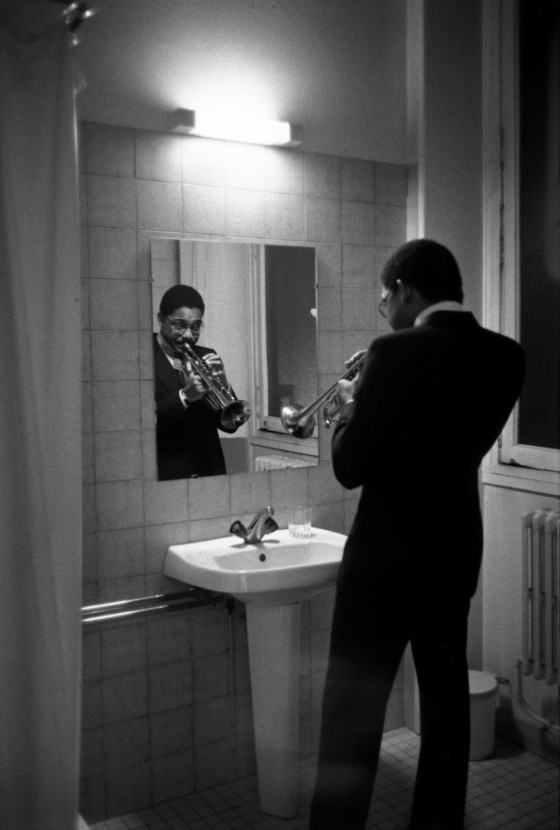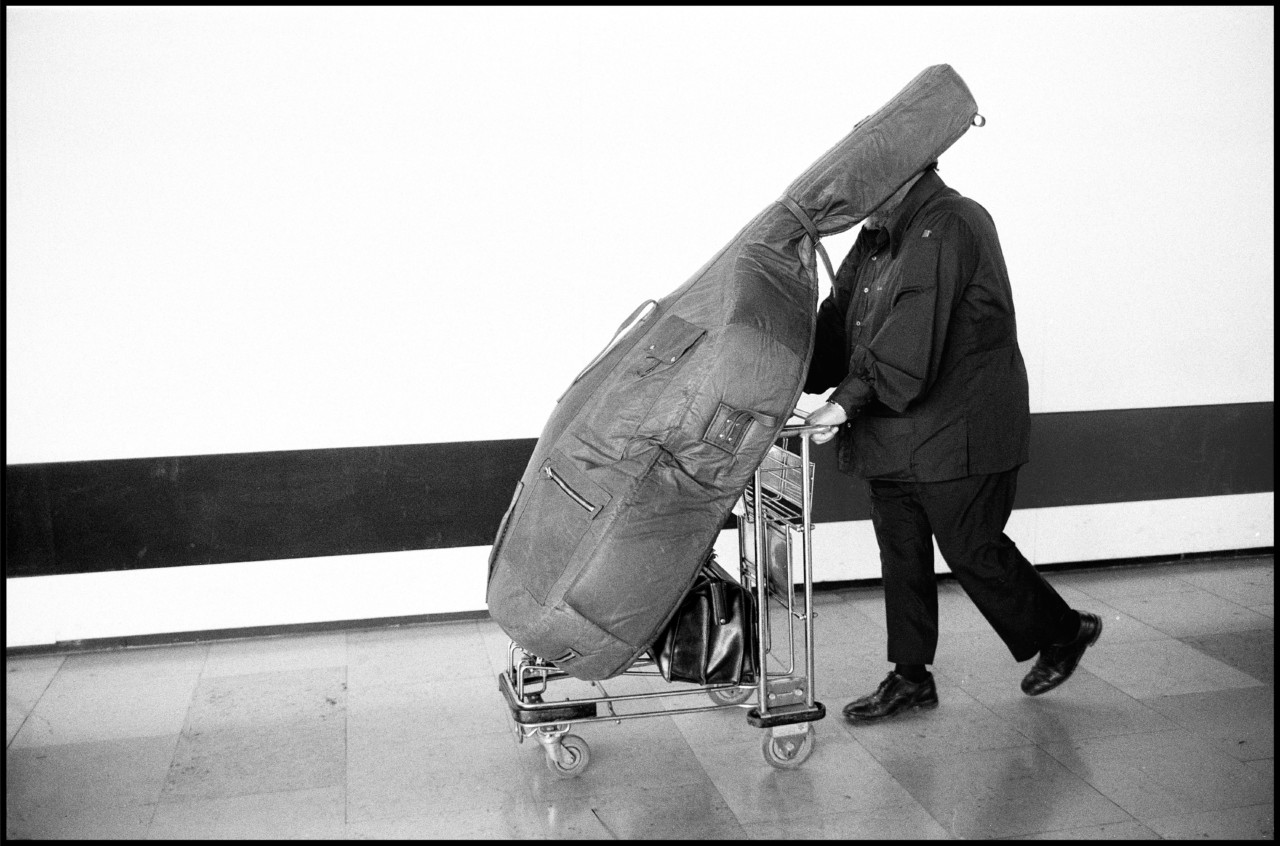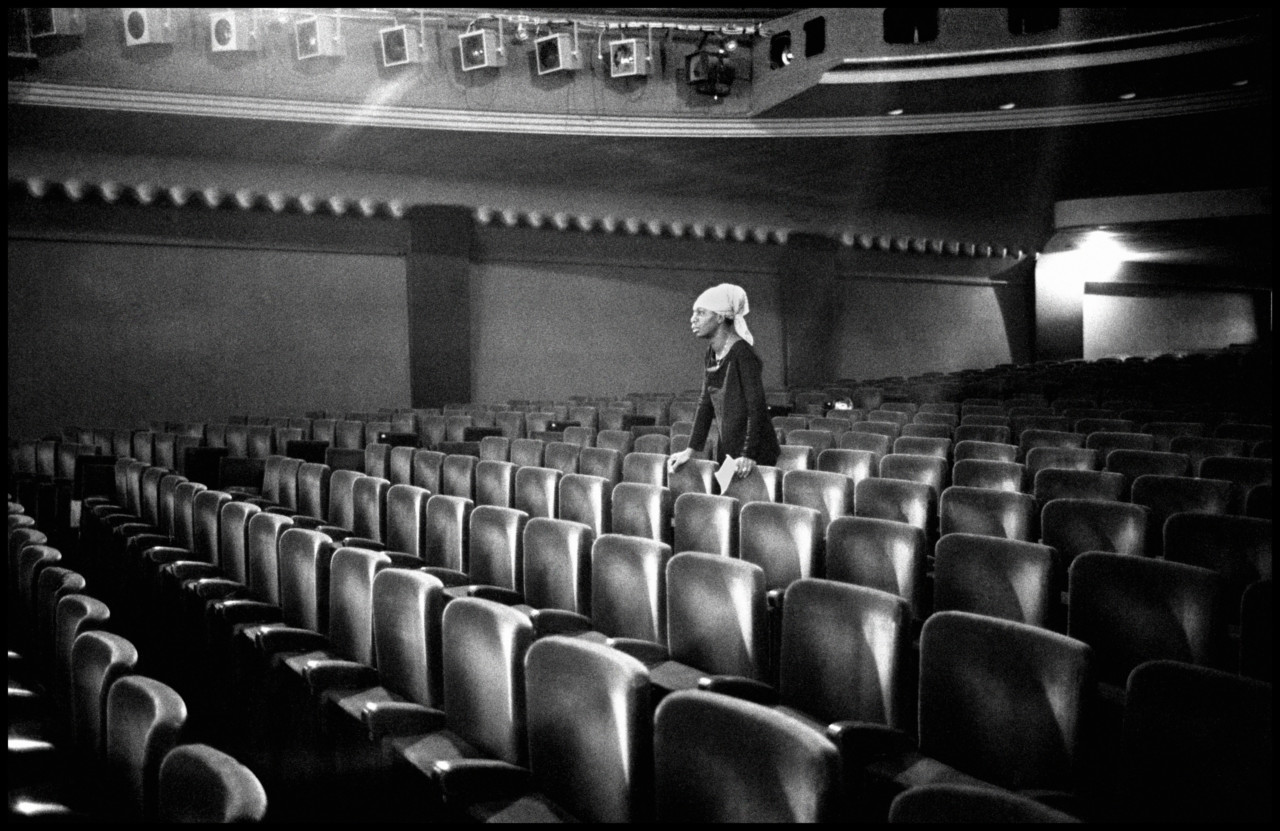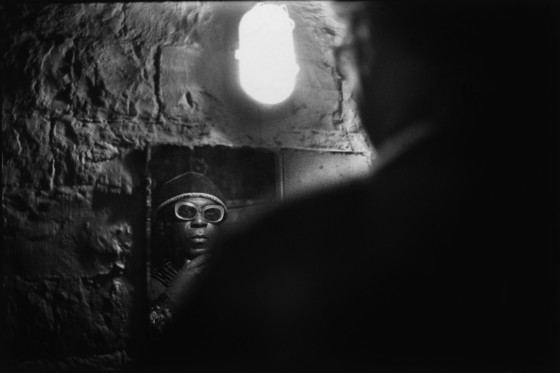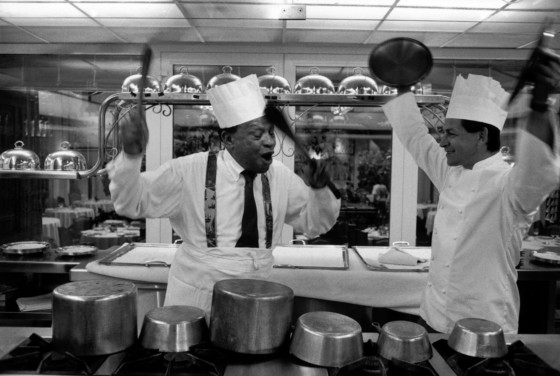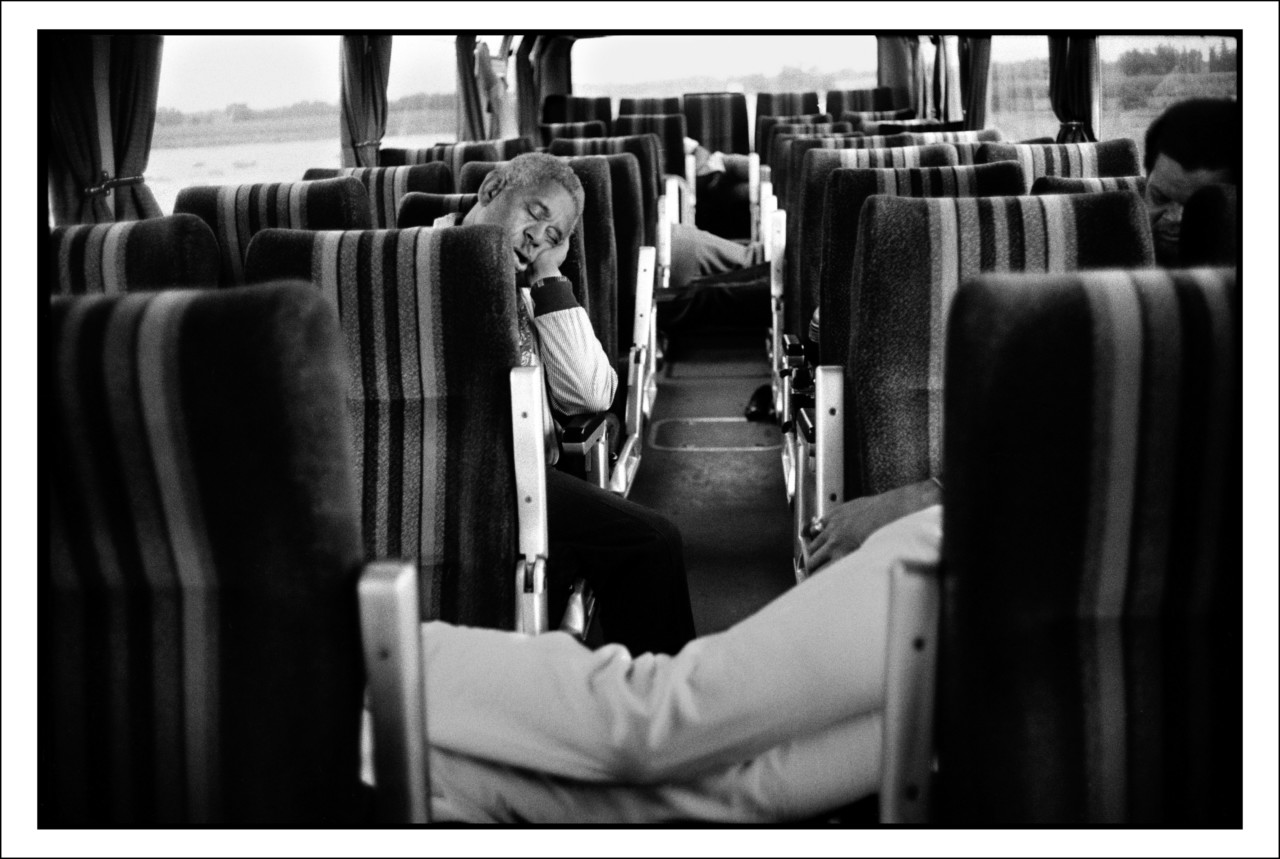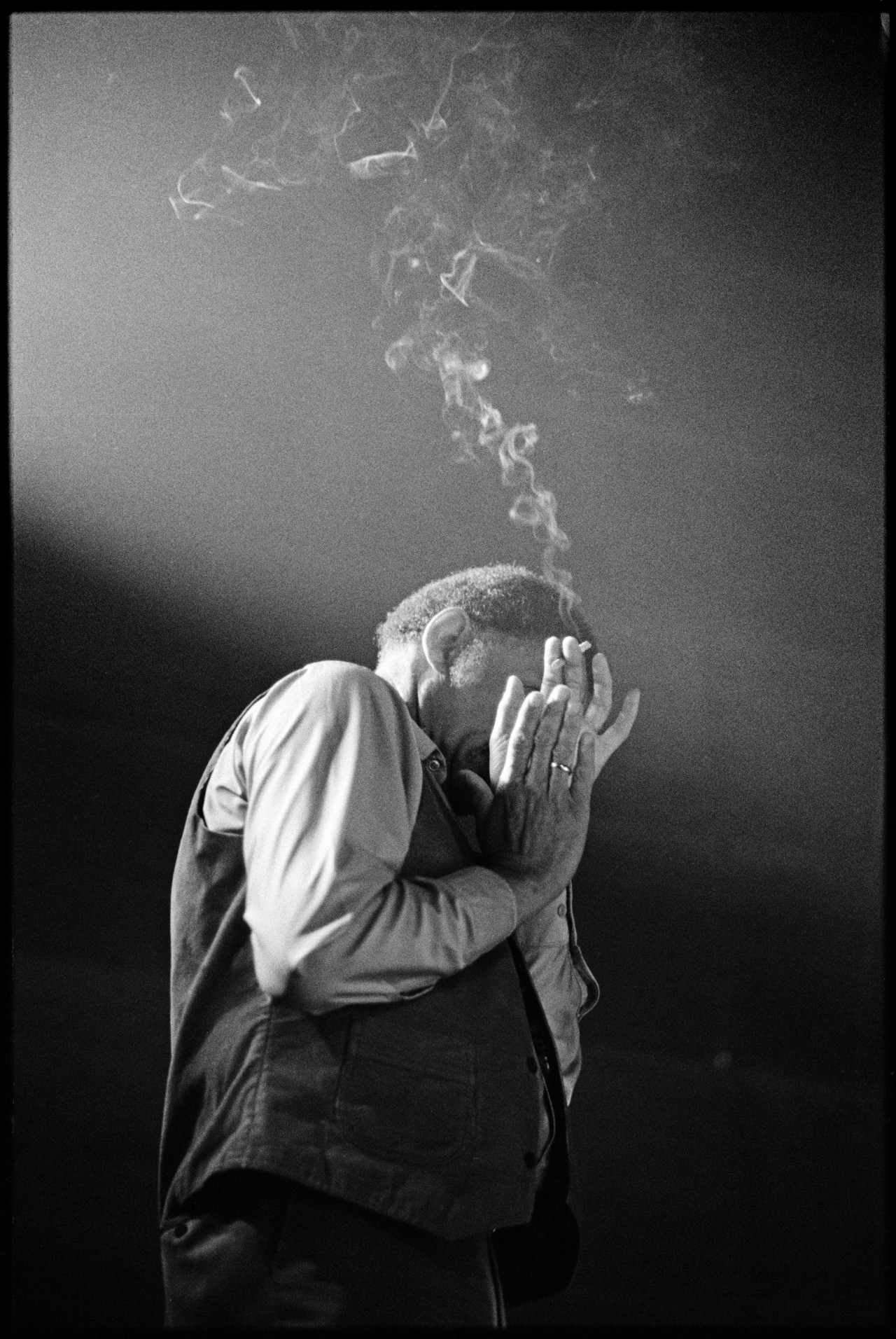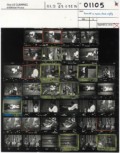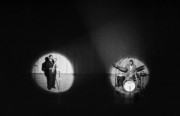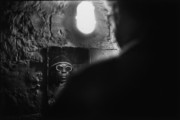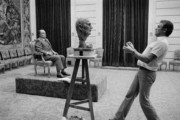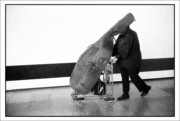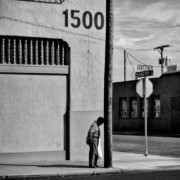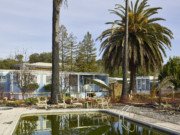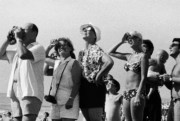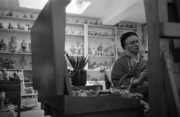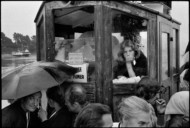“He is not a photographer of jazz, he is a jazz photographer”
Guy Le Querrec's lifelong passion for jazz allowed him to truly capture the febrile intimacy and idiosyncrasies of the genre
To mark World Jazz Day 2019, Jean-Louis Lemarchand, a member of L’Académie du Jazz reflects upon French Magnum photographer Guy Le Querrec’s lifelong documentation of the jazz world and its denizens.
“You reveal secrets about us that we didn’t know ourselves.” The English saxophonist Evan Parker, a master of improvisation, once confided this in Guy Le Querrec. But hundreds of other jazz musicians might have said the same thing. Such a lofty observation demonstrates the extent to which Le Querrec’s eye – his typical sharp, amused, yet respectful gaze – laid bare the personalities of those artists who work in the moment.
An electric current passes between Le Querrec and his subjects, an osmotic relationship that has been in development since 1962, when, on 17th of November at Paris’ Olympia, the young reporter captured – with a second-hand Leica III G – an incandescent John Coltrane.
“Undoubtedly, Le Querrec mirrors his models in what resembles a virtuoso performance, but is in fact the work of extreme sensitivity: he captures the most acute, most challenging and perhaps the richest moments in the adventure of improvisation, and elevates it to the field of observation.” Reflected writer Philippe Carles in the preface to Jazz: de J à ZZ (Editions Marval. 1996), a comprehensive survey of Le Querrec’s jazz work in 390 photos.
An expert has spoken: Carles, the editor-in-chief of Jazz Magazine over three decades (1971-2006) also co-wrote the book, Free Jazz, Black Power (Editions Champ Libre, 1971). Himself, Guy Le Querrec retains his right to freedom of action: “I’m a bit of a rogue; I don’t want to put any aesthetic at stake.”
When he is shooting, the Parisian with Breton roots applies Robert Capa’s famed dictum, “on n’est jamais assez près” [“we are never close enough”] – an alliterative play on words with prêt, which means ready, and près, which means close or near.
"I search every cranny, as did the Italian footballer Pippo Inzaghi... He was an expert in the art of placement, a cunning ‘fox in the box'"
- Guy Le Querrec
Le Querrec also unerlines the necessity of “being able to forget oneself,” to capture the magic instant, the unusual attitude of a subject, or the singular light of a moment. “I search every cranny, as did the Italian footballer Pippo Inzaghi,” he says, comparing himself to the legendary Juventus and AC Milan striker who scored 317 goals in his career. “He was an expert in the art of placement, a cunning ‘fox in the box’.”
This approach is perhaps best illustrated by his iconic image of Miles Davis on stage in Pleyel on November 3, 1969. “I strove to anticipate his movements, which is how I found myself at the right place and time when he froze in a beam of light radiating from the floor, which illuminated him at low-angle and projected his shadow onto the curtains. That’s how Miles passed fluidly from the harsh and flat stage light to a sophisticated sculptural illumination, which accentuated his peculiar and fascinating beauty and highlighted the depth of his gaze – qualities that also describe his musicianship.”
"It’s not about voyeurism, but rather about witnessing the complicity and bond that generated the spontaneous expression we call jazz"
- Jean-Louis Lemarchand
A jazz fan since his teens, Le Querrec, being the jocular wordsmith that he is, likes to recall that his passion for what he describes as “the most popular of erudite music” came to him in the discotheque of accordion-player Gus Viseur’s father – viseur being the French word for viewfinder… As the Italian saying goes, se non è vero è ben trovato!
The fact is, he stays tuned into the music as he works. “I don’t cut out sound.” For that reason it has been said that his eye listens. “His indisputable success in the attempt to reveal the true intimacy of jazz is owed to his inordinate passion that borders on empathy,” points out Stéphane Ollivier in the preface to Jazz Comme Une Image, 10 Ans de Banlieues Bleues ([Jazz as Image, 10 Years of Blue Banlieues], Scandéditions. 1993).
Consulting the work that Guy Le Querrec produced over a decade during that major festival means finding the entire history of contemporary jazz, in action, on stage, in this part of the Seine Saint Denis department. But it is also – and most importantly – like breaking into the backstage, the wings or the green rooms of the musicians, of Dizzy Gillespie, Ray Charles, Ornette Coleman, Nina Simone, Henri Texier, Michel Portal…. It’s not about voyeurism, but rather about witnessing the complicity and bond that generated the spontaneous expression we call jazz. Le Querrec explains, “What impels me to shoot is my curiosity for their idiosyncrasies, their ways of being, their behaviors, their stories: their dialogue with life.”
"Photography is like fishing: it’s usually when you are about to take off that the fish takes the bait"
- Guy Le Querrec
"Deeply concentrated with his trusty and silent Leica, he tenaciously takes “a fragment of reality from the passage of time.”"
- Jean-Louis Lemarchand
Deeply concentrated with his trusty and silent Leica, he tenaciously takes “a fragment of reality from the passage of time.” He acknowledges that “photography is like fishing: it’s usually when you are about to take off that the fish takes the bait.”
That’s when it becomes necessary to seize chances. “We try so much to look for chance that it escapes us.” In this sense, Le Querrec considers his work in the world of jazz as presenting similarities to much of the work he has created at Magnum, since joining in 1976: in his work with Breton families, indigenous communities in North America or even his photographs of François Mitterrand posing for a sculpture in the Elysée Palace in Paris.
“I have never tried to separate subjects when I move amongst them, and I ask my eye to do the same. I want my photography to carry a scent – the scent of people.” This is an attitude, or rather, a philosophy that brings the musician Louis Sclavis, a clarinettist, saxophonist and long-time friend to define Le Querrec as follows: “He is not a photographer of jazz, he is a jazz photographer.”
A selection of Le Querrec’s jazz work is available in the Magnum Shop’s fine print collection, here.


